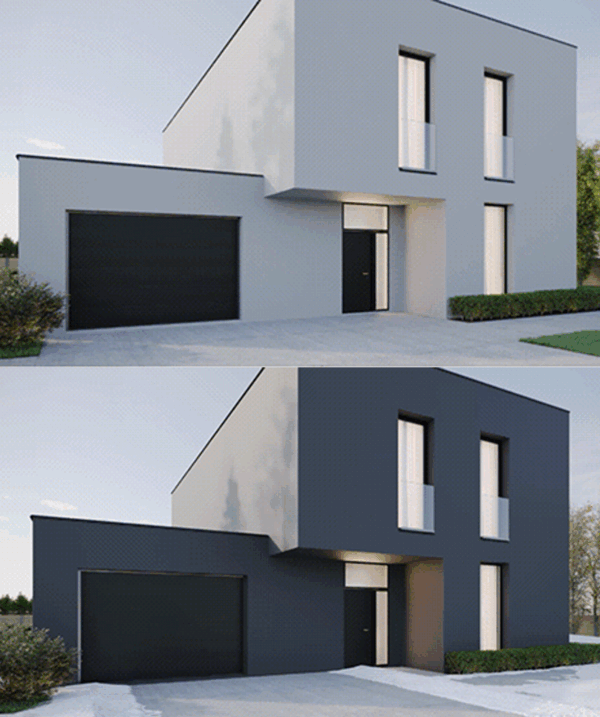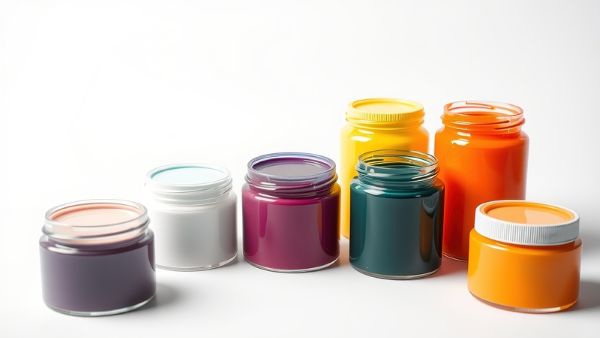An American industrial designer, Joe Doucet, has invented a thermochromic paint that changes colour as outside temperatures rise and fall. He claims that by shifting with the seasons, the changing colour can reduce energy needs for heating and cooling by as much as 25% annually.
The paint turns dark grey in winter and white in summer as the temperature climbs to 25 Celsius (77 Fahrenheit) and above. The summer and winter views of the same house are seen in the picture below.

The paint is not cheap, coming in at three to five times more than commercial exterior paint brands available today. The savings on energy, however, should more than offset the initial outlay and provide a long-term return on investment if the paint proves it is durable.
Thermochromic paint has been around for a while and has been used by artists and home project builders. The captivating colour changes as temperatures rise and fall make for interesting effects.
How does the paint work? It contains molecular pigments that react to temperature changes. In the cold of winter, as the exterior turns black, the house absorbs outside heat, warming the interior by as much as 4 Celsius (7 Fahrenheit). In the summer, the white exterior reflects sunlight, keeping the interior up to 6.6 Celsius (12 Fahrenheit) cooler. The molecules undergo chemical and physical changes that are observable as a darkening. In the summer, the molecules alter the way light bounces off them, getting lighter over time.
Why doesn’t the heating and cooling cause thermal expansion and contraction and contribute to wear? The thermochromic pigments are microencapsulated with the dye, solvent and other chemicals, protected from temperature changes while still reacting to them by changing colour.
Doucet notes that the colour choices aren’t limited to the white transitioning to black. The paint can be made in almost any tint. A light blue house in summer would turn navy blue in the winter. A tan house in summer would be dark brown in winter.
Painting urban roads and roofs white or blue has been used to try and minimize the urban heat island effect for a number of years. There is a reason that houses in Mediterranean countries are painted white.
Project Drawdown has been a global program to promote painting roofs white or greening them with plants in urban buildings to lower temperatures. This project calculated that if the roofs of the world were to be painted white or light blue at a rate of 8 to 10% annually, and if green roofs were installed at a rate of 9 to 11% annual rate, by 2050, city temperatures in summer would be dramatically lowered and we would reduce carbon emissions by 1.1 billion tons annually.
Doucet’s paint has shown it can endure a year of exposure to the elements without deterioration. Multiple years of durability will need to happen to prove thermochromic paint will be a good return on investment for consumers.
Doucet has applied for a patent. He hopes to license the paint formula to current paint manufacturers over the next five to ten years. So, if Doucet’s paint becomes widely available, not only will leaves on trees change with the seasons, but so will houses and buildings coated with his paint. When interviewed by CNN, Doucet stated:
“There’s something poetic about witnessing the built environment transform with the seasons in the same way nature does.”









